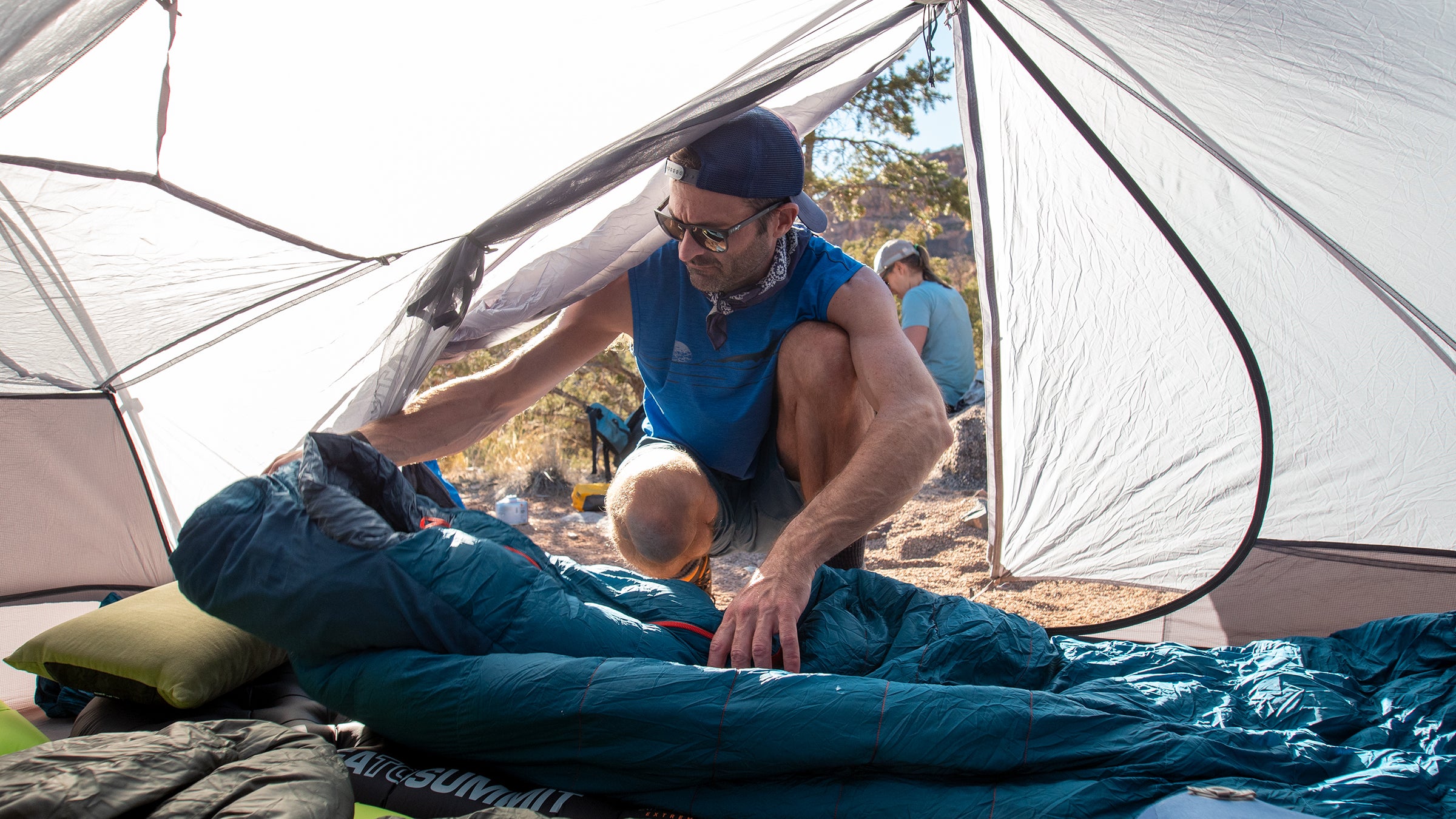How to Set Up a Campsite for a Perfect First Night Out

(Photo: Louisa Albanese)
Picking the Perfect Spot
A great camp starts with a great site. The ideal spot to camp means different things to different people, but any great campsite has all of these features.
Convex, but only slightly. A pancake-flat or concave spot is more likely to pool water if it rains. But if your potential spot is too angled, you’ll slide off your pad or gravity-spoon with your tent partner all night.
Away from water, trails, roads, or anything made by people. Two hundred feet is a good benchmark.
Magnificent. The views are why we’re out here, but keep aesthetics as a secondary criterion to the others on this list.
Protected. Take advantage of natural windbreaks like rocks and trees and you won’t be up all night listening to your tent flap.
Safe. Look up into gullies, canyons, and the tree canopy. If you see evidence of fallen rock, flash floods, or standing deadfall (or snags in trees), keep going.
Impacted. Find a spot that’s been used previously to concentrate (as opposed to spread) the damage to the land. Avoid crushing vegetation and never dig drainage trenches or other nonsense like that.
(un)Trampled. If you sleep in a spot frequented by deer, elk, moose, wild horses, ranging cattle, or wild burros, they’ll probably keep you up at night.
Empty. Don’t be the party that throws down right on top of another camper. (Exceptions: Emergencies or anything after dark.)
Setting Up Your Tent
Practice is the name of the game here: Make sure you know your tent inside and out before you take it outside. Pitch it in your apartment or your backyard. Make sure you have enough stakes and know how to adjust the tension on the guylines.
Stay dry If it’s already raining when you decide to pitch, you run the risk of ending up with a soggy tent. Try to preempt storms and get set up before it starts coming down. Too late? Use a pack towel or spare layers to mop up.
Be prepared Tents rip, poles break. It’s a good idea to have a simple repair kit for essential, in-the-field fixes. Caught unprepared? You may be able to splint your pole with a stick or spare stake and some duct tape.
Ventilation It’s your friend: neglect it, and you’ll wake up with the roof of your shelter dripping. Wait until the weather gets bad to batten down the hatches.
Tips for Sleeping in a Tent
Real talk: Sleeping in a tent isn’t the same as dozing in your bed. You’re more likely to wake up in the night than you are at home. Here are a few keys to quality rest.
EN Ratings Cold sleepers should pay attention to the “comfort” rating on sleeping bags, while warm sleepers can usually get by at the “limit” rating.
Heads up Few campsites are perfectly level. Arrange your body so your head is on the uphill side to avoid late-night headaches.
R-value The higher the R-value, the warmer the sleeping pad. On summer trips, you can get by with a 2; in winter, go 4.5 and up.
Create warmth If you feel cold, pack the dead space in your sleeping bag with dry clothes for more efficient heating.
Ear plugs Scenario: A stick breaks in the forest and you hold your breath for an hour to see if the noise is getting closer. Buck that with a little sensory dep.